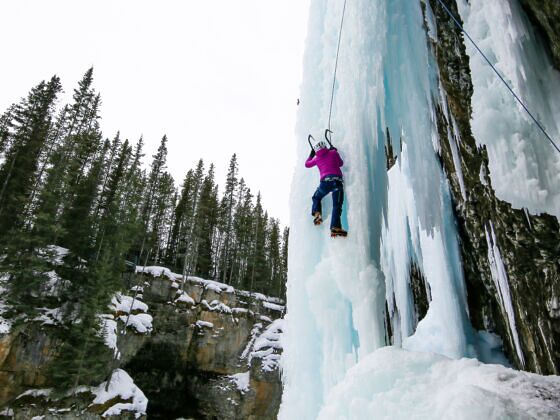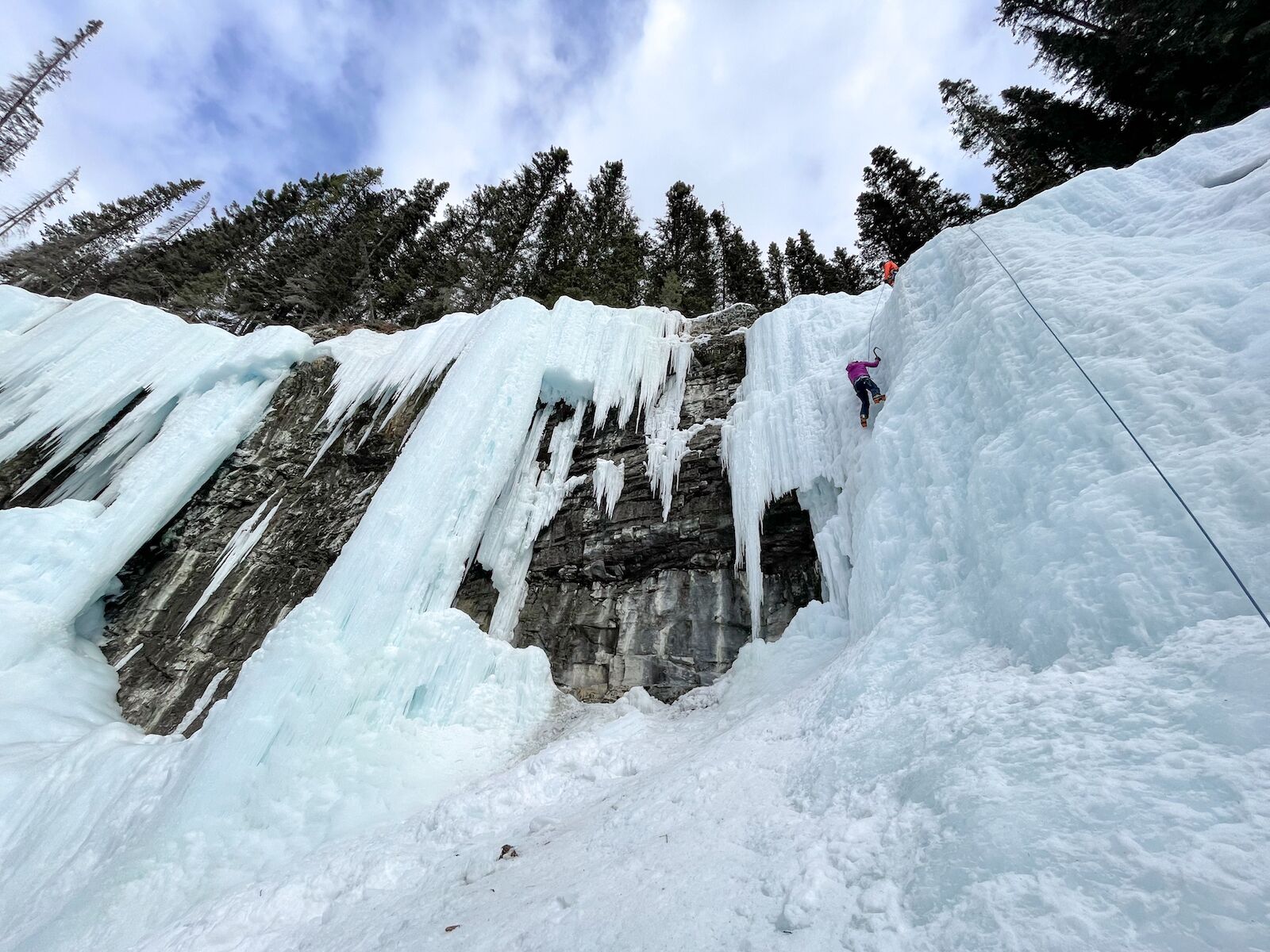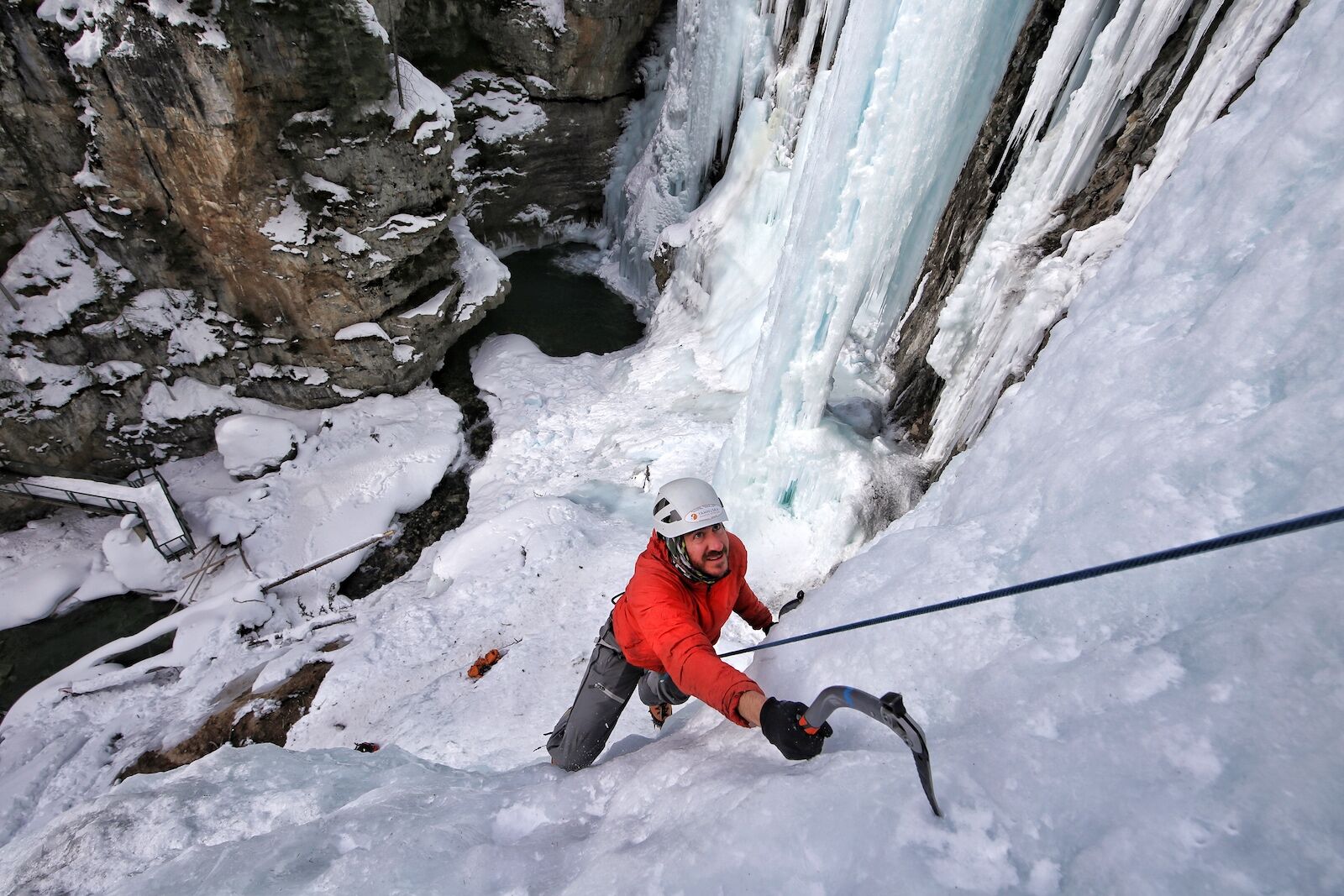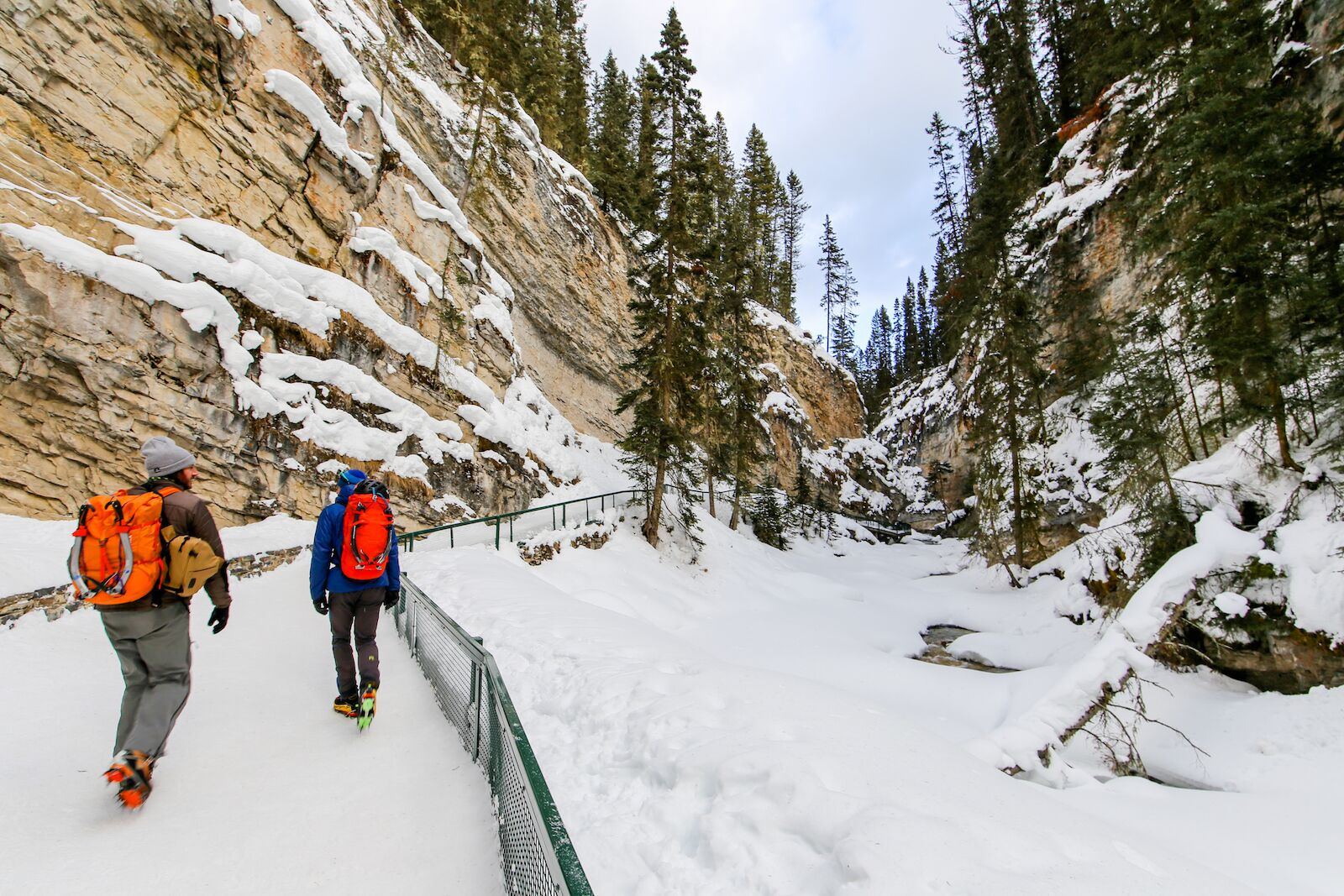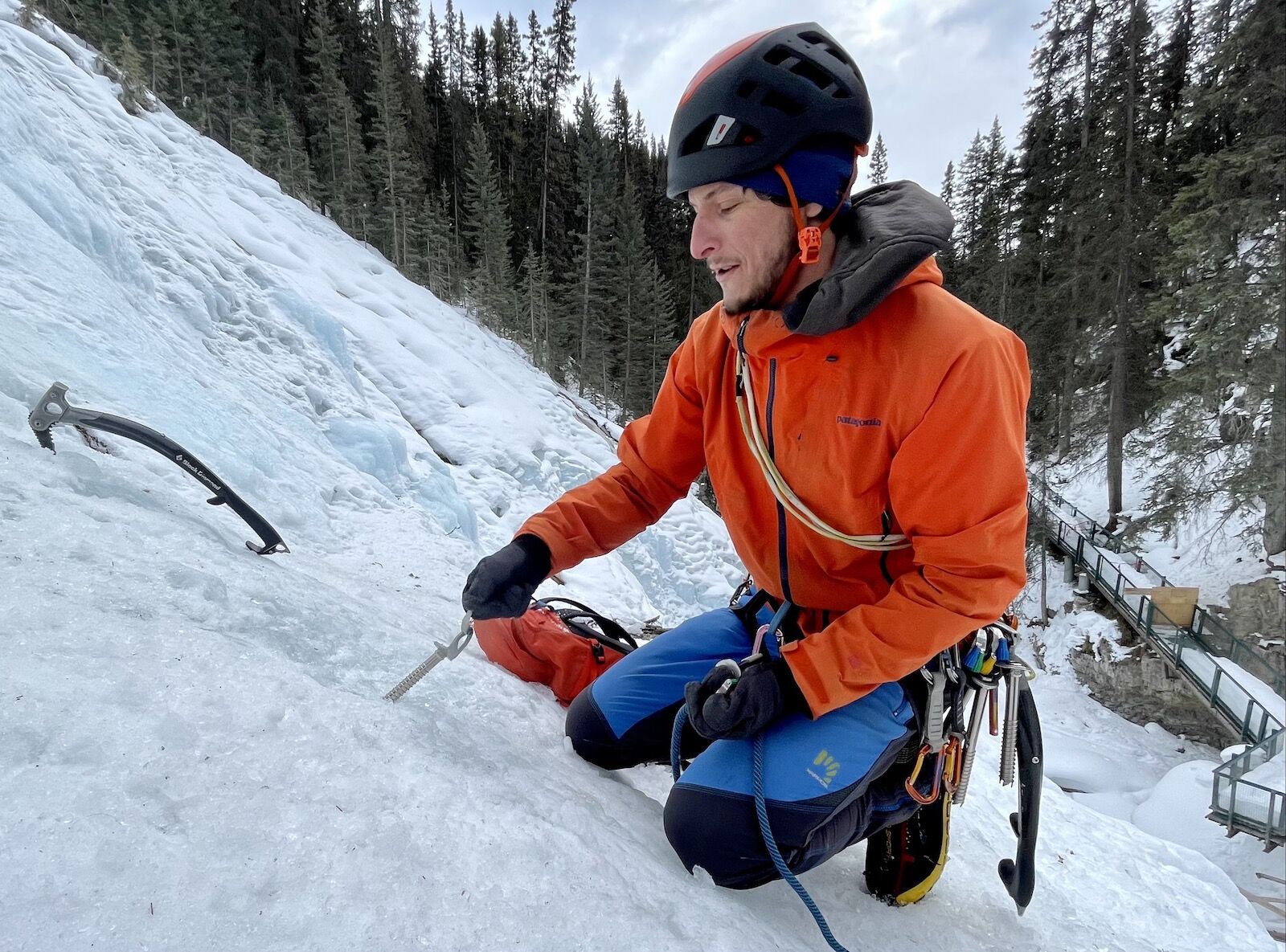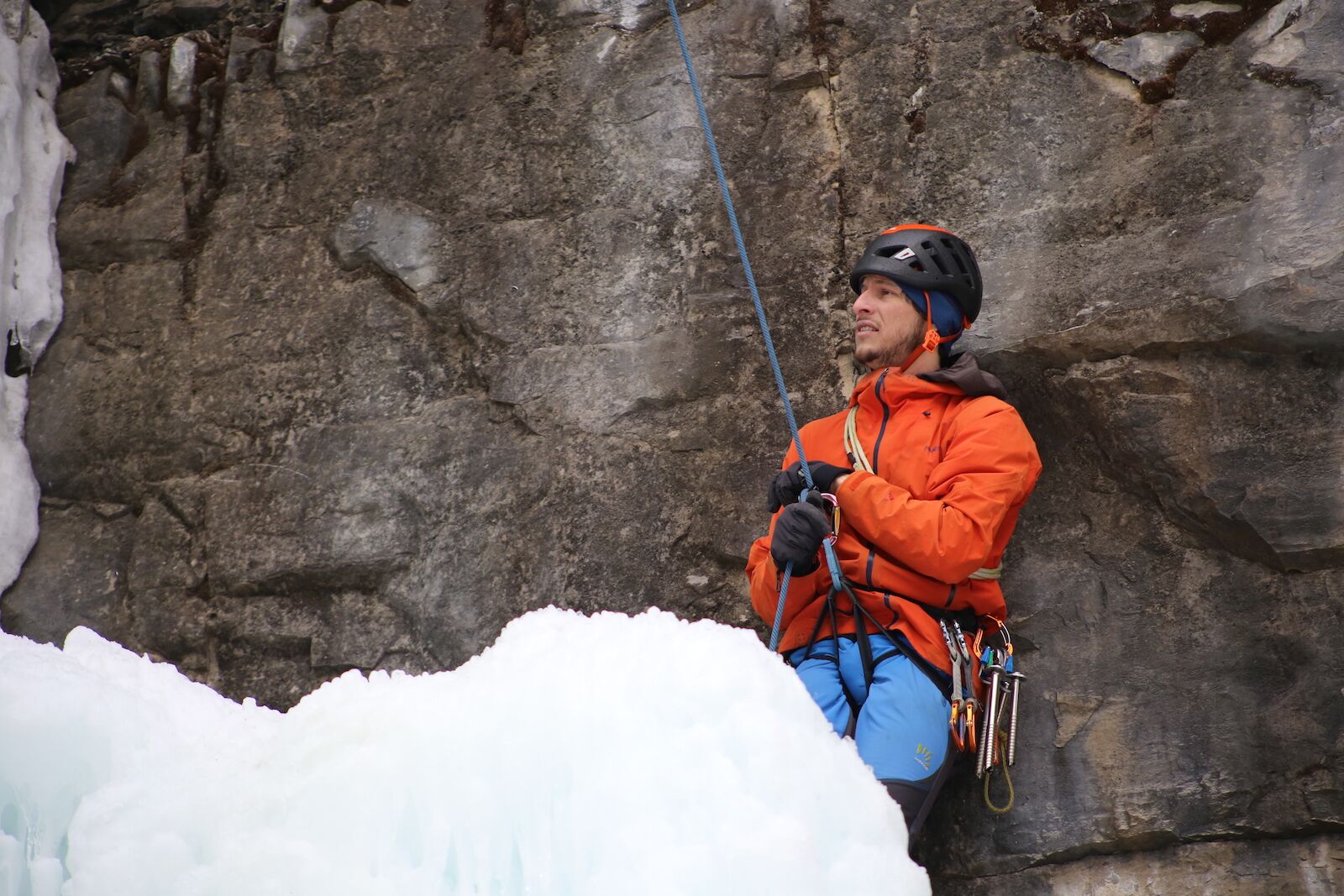For some winter adventurers, there’s nothing more exciting than snowshoeing or hiking through a snow-covered canyon to arrive at a gorgeous frozen waterfall.
But for some adventurers, there is one thing more exciting: climbing those frozen waterfalls with just a pair of spiked shoes and two ice axes.
You don’t have to be a rock climber to go ice climbing, but you do have to know a few basic things about the sport before you strap on your crampons. If you’re a first-timer, you’ll want to go with a guide and instructor. While the sport isn’t hard to do, the fact that you’re climbing on ice in remote areas and cold weather carries risk, and it’s not something you can do without some basic knowledge.
